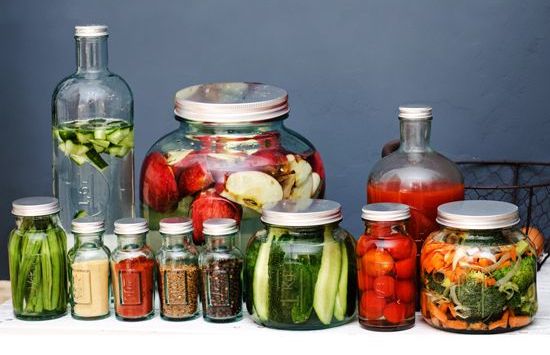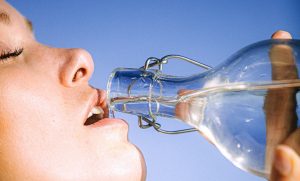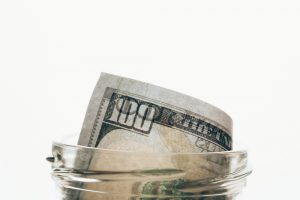In this new decade of the 2020s, both brands & consumers are more conscious than ever of the effects their products have on environmental & personal health. On both ends of the transaction, tough questions are asked about the sustainability of product packaging, glass in particular. Read below as we ask these questions and address them with definitive answers.
Is Glass the Sustainable Choice for Consumer Wellbeing?
In recent years, consumers have become more aware of the health and environmental concerns associated with chemicals found in plastic. Product safety has become a top priority. For this reason, glass has risen to take the spot as the preferred packaging material for health conscious consumers.
How is glass sustainable in this way? Let’s take a look at some key points.
No Chemical Leaching
Unlike plastic packaging, glass does not contain BPA (bisphenol A) or other chemical additives to increase its strength. Therefore, it does not leach these hazardous chemicals into its contents. Glass is non-toxic and less porous, making it impermeable to other environmental factors that could impact product integrity.
Stronger Product Protection
Improper or extreme storage conditions can accelerate plastic’s chemical leaching, which can be harmful to both products and consumers. Glass does not leach chemicals and is a healthier alternative. Not only is glass a stronger substance, but glass packaging maintains the product’s intended form for longer periods, protecting both the packaged product and the end user.
This greater product protection increases a product’s shelf life. By extending the life of a product, it also means less waste and packaging that needs to be created. This is a large contributing factor to glass’s sustainable properties.
How Is Glass Sustainable Over the Entire Product Lifecycle?

One of the biggest factors to the sustainability of glass is its infinite recyclable potential. Glass is 100% recyclable and does not experience any loss of quality through the process. This means that most glass packaging should never wind up in a landfill. It can be repurposed over and over again without compromising the integrity of the new product.
While not all glass is the same, most glass packaging is able to be recycled and diverted from the single-use waste stream, unlike its plastic counterpart. In conjunction with this, recycling glass reduces its carbon footprint. As opposed to manufacturing new glass, recycling consumes less raw materials and energy associated with the mining and refining processes.
Sustainable Glass Vs. Plastic
You may be thinking that lots of plastic products can be recycled and that plastic is more flexible & durable to pressure. While this is true, the debate of plastic vs glass packaging in terms of sustainability is not much of a fight.
Plastic takes over 500 years to decompose in landfills, a much longer time than glass. Of all the types of plastic packaging, our recycling system can only process less than 10%. Most plastics can only be recycled one to two times maximum, which is a stark contrast to glass packaging. Ultimately, all plastic will eventually end up in a landfill despite our best efforts.
Another huge environmental downside to plastic is the chemical leaching that occurs. This is not only to the product inside, like we discussed above, but also to the natural resources. Toxic chemicals seep into our water sources, soil and surrounding environment from discarded plastics.
Production of New Material
Glass is sustainable from its origin to its demise. As a resource efficient material, glass is composed of only natural resources. From abundant natural raw materials, such as sand, creating glass does not require disturbing the natural environment or causing negative feedback. Because of its fully recyclable quality, glass is a sustainable choice that is able to close the consumption loop.
Is the Cost of Glass Sustainable?
Energy Consumption
While recycling does have its costs, glass is still more sustainable than its plastic alternative. It actually requires less energy to recycle existing glass product than to melt raw materials. Glass containers are not usually treated with chemicals for durability which makes them excellent for the recycling process.
Transportation
Glass is heavier and more fragile to transport than other packaging materials. The added transportation costs go against the sustainability of glass. But, it lasts longer and keeps the product in usable condition longer. Therefore, the costs can be broken up over the lifetime of the glass packaging making it comparable to the alternatives.
Recycled Glass Packaging
For your products, choosing glass packaging manufactured with recycled content is the most sustainable choice you can make for your costs, customers, and planet. To this end, Glassnow has made it a point to offer a wide array of products containing recycled content, including both jars and bottles that contain 100% recycled content. Explore a few below, as well as on our product pages!
| Image: | Name: | Dimensions: | Capacity: |
|---|---|---|---|
 | Honey Recycled Glass Jar | 3.5" L x 3.5" W x 4" H | 8.5oz |
 | Authentic Recycled Glass Jar | 3.25" L x 3.25" W x 4" H | 8.5oz |
 | Euro Recycled Glass Jar | 3.25" L x 3.25" W x 4.25" H | 11.8oz |
 | Cubic Recycled Glass Bottle With Cork | 2.72in D x 2.72in W x 3.54in H | 6oz |
 | Orbit Recycled Glass Bottle With Cork | 2.72in D x 2.32in W x 3.39in H | 3.5oz |
 | Rectangle Recycled Glass Bottle With Cork | 2.05in D x 2.05in W x 9.72in H | 12.7oz |
 | Drop Recycled Glass Bottle With Cork | 3.15in D x 3.15in W x 9.84in H | 11.8oz |
By choosing to package your products in sustainable glass packaging, you’re raising the wellbeing of your business, customers, and environment alike. Take pride in your steps to go green and encourage your customers & colleagues to do the same.



